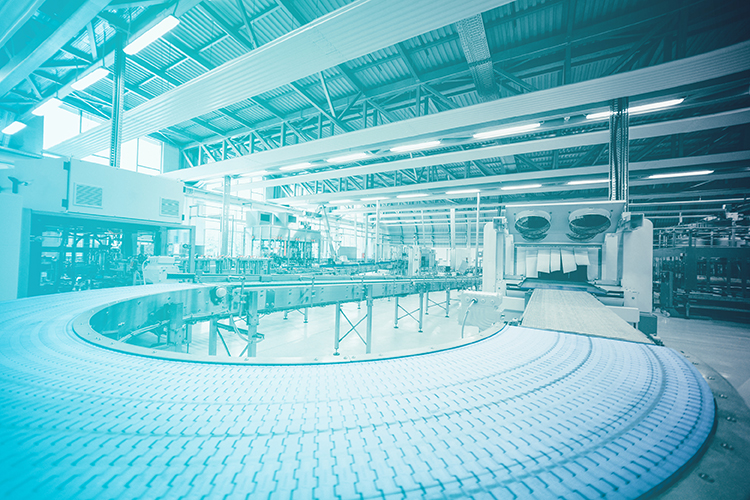Large quantities of data can be quickly and precisely analyzed and processed with machine learning methods. While machine learning and artificial intelligence (AI) possess tremendous potential in applications such as autonomous driving, Industry 4.0 or MedTech, they also bring new challenges with respect to safety and dependability. With this in mind, the Fraunhofer Institute for Cognitive Systems IKS conducts research into ways to comprehensively validate artificial intelligence technologies so that they can be integrated into safety-critical applications as well.
Artificial Intelligence (AI) and Machine Learning
What is artificial intelligence? What is machine learning?
Artificial intelligence (AI) is an area of computer science that imitates human cognitive capabilities by identifying and sorting input data. This intelligence can be based on programmed work flows or created with machine learning.
Great strides have been made over the past several years, especially in the area of machine learning. Much of this is related to the growing availability of large amounts of data and extensive computing power, both of which are basic prerequisites for the complex calculations performed by machine learning.
In machine learning, algorithms learn to independently carry out a task through repetition. The machine orients itself to a predefined quality criteria and the content in the data. Unlike with conventional algorithms, a solution path is not modeled. Instead, the computer learns to recognize the structure of the data on its own. Robots for example, can learn how to grab specific objects in order to transport them from point A to point B. The only instructions they receive are where to retrieve the objects and where to transport them. The robot learns how to grab the object through repeated trial and error and feedback from successful attempts.
Neural networks and deep learning

A sub-area of machine learning is neural networks. These learning algorithms are inspired by the nerve cell connections in the human brain, which processes information via neurons and synapses. Similarly, artificial neural networks are made of multiple series of data nodes that are networked together with weighted connections.
The neural network is trained by repeatedly feeding it with data. Through this repetition, the neural network learns to more precisely classify the data each time. It does this by repeatedly adjusting the weighting for the individual connections between the neuron layers. The model, which is created through the learning iterations, can then be applied to data that the artificial intelligence still has not become familiar with during training.
Neural networks with concealed neuron layers that are not directly coupled to the input or output layer are called »deep neural networks«. Deep neural networks can have hundreds of thousands or millions of neuron layers. Through so-called »deep learning«, computers are thus capable of solving increasingly complex problems.
Machine learning: multifaceted applications
Machine learning methods are used in a wide range of applications:
- Image detection: Machine vision algorithms can be used to detect and categorize images, allowing enormous amounts of data to be processed very rapidly. Machine vision is found in areas such as medical diagnostics and face recognition, but is also used for translating handwritten characters in printed publications. Image detection is also critical for autonomous driving applications.
- Voice recognition: Recognizing and interpreting verbal language can also be learned with machine learning methods. These algorithms are used in applications such as voice assistant systems.
- Semantic voice recognition: Written text can be semantically interpreted through machine learning, allowing context-based translation applications or chatbots that generate reasonable solutions without human assistance.
- Pattern recognition: Machine learning can also be used to recognize a pattern of events that would be impossible for humans to identify because of the large number of data points, variables and dependencies that must be analyzed. AI can use data to recognize an error pattern in a vehicle electronics system and compare this anomaly with the operational behavior. This results in faster recognition of anomalies and thus creates an opportunity to counteract the problem earlier, such as swapping out a component before it causes a malfunction.
- Process optimization: The recognized patterns can also be used as an information basis for optimization processes. These contain process models created by machine learning methods that enable optimized process controls.
Advances in innovation with artificial intelligence
Automated machines must be able to respond quickly and dependably to their environment. This capability is enhanced through machine learning. Still, AI applications are not inherently perfect. Errors in the selection of suitable training data or when generating or processing data can lead to dangerous flaws in the system that the AI technology is incapable of recognizing and avoiding. The focus of the research activities of the Fraunhofer Institute for Cognitive Systems IKS is to validate the dependability of AI technologies through extendable and adaptable software architectures.
What’s crucial is that the system in which the AI technology is embedded operates in a completely safe and dependable manner, particularly when safety-critical applications are involved. The challenges in validating machine learning from data are decidedly different from the challenges that arise with conventional programmed software. The training data that is utilized plays an important role in the quality of the neural network that evolves. If the data is not representative of the numerous situations that the system will eventually be confronted with, this leads to an inadequate model and bad decisions. In order for the model to be suitable for unlearned data, it has to be robust and capable of abstraction. In other words, the model cannot be too closely tied to the training data, which leads to overfitting and a model that does not perform abstractly enough for new data. On the other hand, what also has to be avoided is underfitting, or the creation of a model that is not sophisticated enough to precisely describe the structure of the data.
Safe AI: Validating machine intelligence in autonomous driving systems

Precise data analysis and process control are essential for autonomous driving for example. Vehicles must be in a position to recognize their surroundings, interpret situations accurately and then optimize their actions.
Unlike conventional algorithms, machine-trained programs have the problem that the individual learning steps cannot be interpreted by humans. By automatically adjusting the weighting in neural networks, the only thing that remains accessible for human control is the input and the result. Under the term »Explainable AI«, one of the research goals is design neural networks that can be understood by humans. Since the AI decision path lacks transparency, to date it hasn’t been possible to analyze the safety and dependability of the AI technology.
Similarly, Machine vision (perception) has so far not been dependable enough to be suitable for use in safety-critical applications in autonomous vehicles on public roads. The first task is thus to find ways to make AI uncertainties quantifiable so that the perception can be logically analyzed. The Fraunhofer Institute for Cognitive Systems IKS is working on ways to solve these challenges and to create verifiably dependable systems capable of quantifying AI uncertainties. The aim is to be able to effectively manage the previously nontransparent AI classification. After all, only when AI systems can be understood by humans, will they be safe enough to use with applications such as autonomous driving on public roads.
One approach used by Fraunhofer IKS is to enhance the AI with an advanced software architecture that monitors the artificial intelligence and tests the plausibility of the decisions. At the same time, the dynamic safety management approach will provide the AI technology more leeway than is available through conventional safety management approaches, which always operate on a worst-case scenario. The benefits of fast data processing can thus be exploited by machine learning while intercepting potentially wrong decisions. This is especially important in applications such as autonomous driving, when wrong AI decisions would place human lives at risk.
Machine intelligence in industrial automation
Even in the digitalization of industry, so-called Industry 4.0, machine intelligence allows for optimized planning and better predictions. Automated, connected machines can recognize their surroundings and independently adapt their actions accordingly. Even human-machine collaboration will be possible without safety barriers only with machine learning and artificial intelligence technologies. This is another area that will require validation of the AI to ensure that no human lives are endangered.
In the joint project “REMORA – Multi-Stage Automated Continuous Delivery for AI-based Software & Services Development in Industry 4.0”, the Fraunhofer Institute for Cognitive Systems IKS has teamed up with additional partners to work on the simple integration of AI services in Industry 4.0. Its goal is to simplify the integration of AI for the real-time analysis of machine data and to develop tools for high-quality, dynamic machine data. Learn more on our project page.

 Fraunhofer Institute for Cognitive Systems IKS
Fraunhofer Institute for Cognitive Systems IKS



